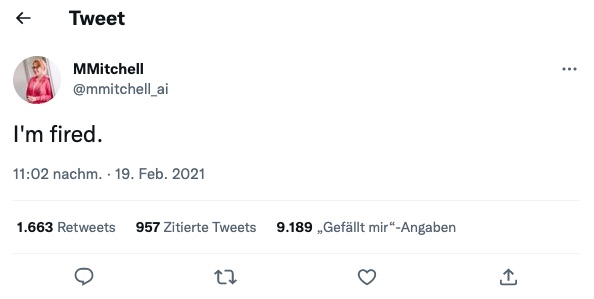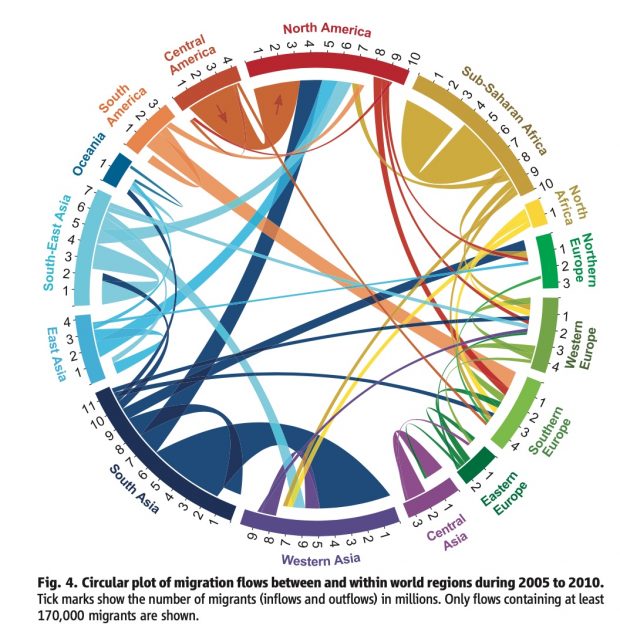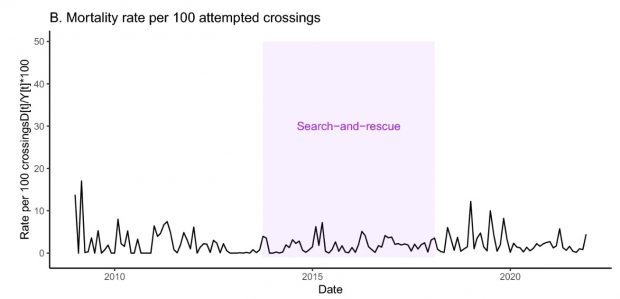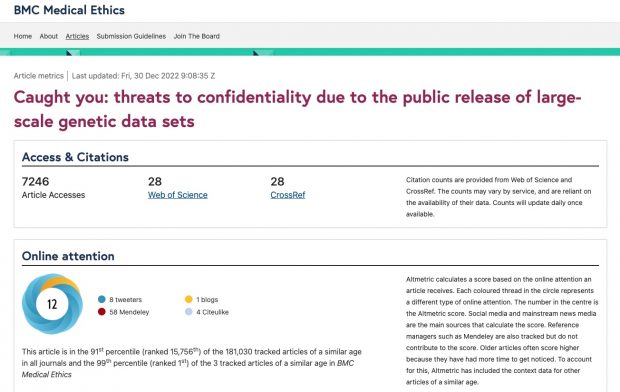While we are still waiting for the contest of the best illusions in 2022 here are my my all time favorites:
– for acoustics it is Yanny or Laurel – I hear Yaurel
– for optics it is the wedding dress – I see blue with black lace
While we are still waiting for the contest of the best illusions in 2022 here are my my all time favorites:
– for acoustics it is Yanny or Laurel – I hear Yaurel
– for optics it is the wedding dress – I see blue with black lace
From theredhandfiles.com Continue reading Data doesn’t suffer
Unfortunately, FFMPEG does not support NDI due to copyright issues but wait there is a recent Github tutorial that brings back NDI support on Linux machines.
For MacOS several patches/versions are outdated while I now found that the old method posted by Johan Els on Github several years ago still works.
As I can stream now basically every camera under macOS and Ubuntu using gphoto2 and ffmpeg, I am ready to sell my whole HDMI setup including the Atem Mini – at least at sometime in the near future ;-)
Steht [der Begriff] unter einem Beitrag als Antwort, wird darauf hingewiesen, dass der ursprüngliche Post mehr Antworten als „Retweets“, „Likes“, „Gefällt mir“-, oder „Fav“-Angaben hat. Es kann auch verwendet werden, wenn ein „DruKo“, also eine Antwort unter einem Beitrag, mehr „Likes“ hat als der Ausgangsbeitrag. Manchmal wird auch „ratioed“ verwendet. (GIGA)
“Ratio” sollte vielleicht auch als PubMed Flag bei Zeitschriften eingeführt werden, wenn es mehr PubPeer Kommentare als Zitierungen gibt.
Very superstitious
Writing’s on the wall
Very superstitious
Ladder’s ’bout to fall
Thirteen month old baby
Broke the lookin’ glass
Seven years of bad luck
The good things in your past
When you believe in things
That you don’t understand
Then you suffer
Superstition ain’t the way
Yeah
Ooh, very superstitious
Wash your face and hands
Rid me of the problem
Do all that you can
Keep me in a daydream
Keep me goin’ strong
You don’t want to save me
Sad is my song
When you ..
Very superstitious
Nothin’ more to say
Very superstitious
The devil’s on his way
Thirteen month old baby
Broke the lookin’ glass
Seven years of bad luck
Good things in your past
When you ..
Shobita Parthasarathy in a recent interview
I had originally thought that LLMs could have democratizing and empowering impacts. When it comes to science, they could empower people to quickly pull insights out of information: by querying disease symptoms, for example, or generating summaries of technical topics.
But the algorithmic summaries could make errors, include outdated information or remove nuance and uncertainty, without users appreciating this. If anyone can use LLMs to make complex research comprehensible, but they risk getting a simplified, idealized view of science that’s at odds with the messy reality, that could threaten professionalism and authority.
So ziemlich alles, was beim Verfassen eines wissenschaftlichen Textes nicht schief l�aufen sollte [ist hier passiert]:
Die Künstliche Intelligenz (KI) kann wissenschaftliche Quellenangaben nahezu perfekt fälschen.
Und zwar so geschickt, dass selbst Fachleute auf dem entsprechenden Gebiet Mühe bekunden, die entsprechenden Falschinformationen als solche zu erkennen.
Die als «Datenhalluzinationen» bezeichneten Kreationen der KI können auch, aber nicht nur, auf die vom Menschen gestellten Fragen zurückgeführt werden.
Bruce Alberts, one of the most reputable living scientist, already back in a 2014 PNAS paper
The long-held but erroneous assumption of never-ending rapid growth in biomedical science has created an unsustainable hypercompetitive system that is discouraging even the most outstanding prospective students from entering our profession—and making it difficult for seasoned investigators to produce their best work…
The great majority of biomedical research is conducted by aspiring trainees: by graduate students and postdoctoral fellows. As a result, most successful biomedical scientists train far more scientists than are needed to replace him- or herself…
Competition in pursuit of experimental objectives has always been a part of the scientific enterprise, and it can have positive effects. However, hypercompetition for the resources and positions that are required to conduct science suppresses the creativity, cooperation, risk-taking, and original thinking required to make fundamental discoveries…
The inflated value given to publishing in a small number of so-called “high impact” journals has put pressure on authors to rush into print, cut corners, exaggerate their findings, and overstate the significance of their work.
there is nothing to add.
Das theologische Testament Ernst Käsemann’s – die Rede an seinem 90. Geburtstag. Der volle Abdruck bei Jochen Teuffel, Pfarrer in Vöhringen.
Die Aufgabe des spezifischen Theologen ist nach Paulus die Unterscheidung der Geister. Der Fromme soll nicht immer frömmer werden. Er hat nicht „Religion“ unter anderen Religionen zu betreiben und zu demonstrieren. Die Nachfolge des Nazareners ist von ihm verlangt. Der Einzelne mag Modell in der Gemeinschaft sein. Das Priestertum aller Gläubigen ist aber nicht durch erbaulichen Individualismus zu ersetzen. Jeder Christ befindet sich im Gegenüber zur ganzen Welt und hat, selbst wenn er in seiner Umwelt isoliert wird, sowohl dem Idealismus wie dem Materialismus zu widerstehen. Er hat stets seinen Herrn zu bekennen, wo irdisch die Götzen herrschen, sei es im Zeichen der Machtgier oder des Aberglaubens oder des Mammons.
Nature reported yesterday a new paper by Russell Funk on research innovation or “disruptiveness”
The number of science and technology research papers published has skyrocketed over the past few decades — but the ‘disruptiveness’ of those papers has dropped, according to an analysis of how radically papers depart from the previous literature.
Data from millions of manuscripts show that, compared with the mid-twentieth century, research done in the 2000s was much more likely to incrementally push science forward than to veer off in a new direction and render previous work obsolete. Analysis of patents from 1976 to 2010 showed the same trend.
So has everything already discovered by getting most low hanging fruits (A)? Are scientists no more taking any risk (B)? Or is the “disruptive” science now hidden in the meaningless research (C)? Or did only change citation practices (D)? The answer is in the original paper
Specifically, despite large increases in scientific productivity, the number of papers and patents with CD5 values in the far right tail of the distribution remains nearly constant over time. This ‘conservation’ of the absolute number of highly disruptive papers and patents holds despite considerable churn in the underlying fields responsible for producing those works… These results suggest that the persistence of major breakthroughs—for example, measurement of gravity waves and COVID-19 vaccines—is not inconsistent with slowing innovative activity. In short, declining aggregate disruptiveness does not preclude individual highly disruptive works.
In my own words: Progress is found in the top percentiles just as many decades before. But most research publications are a waste of money and even harmful for cluttering up the research field.
There seem to be also some critical comments and of course some methodological issues need to be clarified for any further interpretation (eg exclusion of reviews, validity of the 5 year interval, …). 5 years may not be enough in some fields, medical practice doesn’t even change for a long time – see also the comment of Bruce Albert. In any case, the authors promised to give me the CD5 dataset which will be nice to look up my own work.
20 Feb 2023
Forgot to update this post as there is an option E – that the study is just describing an artefact,.. I received the dataset one week later but couldn’t verify the claims when analyzing my own “disruption score”. Upon inquiry RF said that PubMed doesn’t include citations for all papers. “So to drop these papers from the data, required that papers had at least 1 reference in their reference list, and had been cited at least 1 time”.
The numbers were however still confusing as are 2.3 million entries in the CD5 file while Pubmed had roughly 18 millions entries in 2010 according to https://www.nlm.nih.gov/archive/20110328/bsd/licensee/2010_stats/2010_LO.html.notice.html. So I asked if the discrepancy may be explained by an additional constraint? RF explained that “For the Nature paper, we only analyzed data up through 2010, for consistency with the other data sets used in the paper. But we computed the measure for more recent years” which may have led to the missing scores.
A colleague also wrote about the study later in a German magazine https://www.laborjournal.de/rubric/narr/narr/n_23_03.php basically saying that science is not disruptive, it builds nearly always on earlier ground work: “Disruptive is economic gobbledegook”.
Interestingly and only last week I learned about another much more extensive reanalysis that arrives at very similar conclusions “Dataset Artefacts are the Hidden Drivers of the Declining Disruptiveness in Science“. Holst et al. describe in this paper
Our reanalysis shows that the reported decline in disruptiveness can be attributed to a relative decline of these database entries with zero references. … Proper evaluation of the Monte-Carlo simulations reveals that, because of the preservation of the hidden outliers, even random citation behaviour replicates the observed decline in disruptiveness.
And well, there is now also a PubPeer entry but only from the last year.
aus dem Testament von Papst Benedikt
Oft sieht es aus, als ob die Wissenschaft – auf der einen Seite die Naturwissenschaften, auf der anderen Seite die Geschichtsforschung (besonders die Exegese der Heiligen Schriften) – unwiderlegliche Einsichten vorzuweisen hätten, die dem katholischen Glauben entgegenstünden. Ich habe von weitem die Wandlungen der Naturwissenschaft miterlebt und sehen können, wie scheinbare Gewißheiten gegen den Glauben dahinschmolzen, sich nicht als Wissenschaft, sondern als nur scheinbar der Wissenschaft zugehörige philosophische Interpretationen erwiesen – wie freilich auch der Glaube im Dialog mit den Naturwissenschaften die Grenze der Reichweite seiner Aussagen und so sein Eigentliches besser verstehen lernte.
Ein hervorragender Insider Kommentar zu Gebru und Mitchell, der Frau die von Google wegen ihres AI Papers gefeuert wurde.

Michaela Menken schreibt dazu
Bias in/bias out. Sprich, die gelernten Modelle verstärken die Positionen und Stimmen, die in den Trainingsdaten am meisten vertreten sind. Und das sind selten die Positionen und Stimmen von Minderheiten …
Reporting Bias … implizite, ontologische Kenntnis der Welt steht der KI nicht vollumfänglich zur Verfügung…
Selection Bias also … die durch die Auswahl der Daten entstehen können…
Confirmation Bias … ob der Output für qualitativ gut oder schlecht gehalten wird, korrespondiert natürlich mit dem Weltbild und den Erwartungen desjenigen, der die Überprüfung durchführt.
Automation Bias. Menschen neigen dazu, Ergebnisse, die algorithmisch herbeigeführt wurden, schneller und leichter anzunehmen
Es sind also massive ethische Probleme, die mit dem Einzug der KI entstehen. Nicht umsonst wurde in Augsburg im letzten Jahr ein “Center for Responsible AI Technologies” gegründet. Dazu wurden 100 neue Lehrstühle geschaffen, selbst der bayrische Ethikrat hat sich vor 2 Wochen einschlägig wenn auch wenig konkret dazu geäussert.
Having been confronted with the “pull” doctrine now many times, I went for further literature. The best summary that I have found is by the European Asylum Support Office 2016
On the conceptual level, there are serious limitations with the commonly used (yet often critiqued) push and pull framework as an explanatory tool for migration decision-making processes … it makes strong assumptions about the way individuals respond to stimuli; it presumes that an individual can make cost/benefit decisions based on full information, in markets tending to a general equilibrium, far from the complex reality of human mobility. As such, the model fails to explain why, for instance, people respond differently to the same ‘push’ and ‘pull’ forces, and why emigration and immigration occur simultaneously in the same area.
There seem to be many more limitations than currently assumed.
factors explaining migration 1) often originate in the household/community/country of origin (e.g. unemployment, gender discrimination, conflict), while factors influencing migration 2) are more likely to be destination-specific (e.g. presence of co-ethnic community members, perception of the country as having a permissive asylum regime, language similarities) or process- specific (e.g. a smuggler has chosen a destination).
Another key issue, is the high death toll that is of course known to refugees.
Studying migration flows across the Mediterranean, particularly along two routes (the western and central Mediterranean routes), Altai Consulting found that social, political, and economic instability inspired migration flows but that individuals fleeing greater threats to their personal security were willing to traverse more dangerous and uncertain migration routes.
So we are dealing with
The report shows the relevance of migrant networks in facilitating asylum migration movements and influencing migrants’ destination choices. Going back even to an earlier report of migration direction in Science, I can’t find any evidence for any pull effect.

Aug 4, 2023
There is a new time series study in Sci Rep by Alejandra Rodríguez Sánchez aggregating counts of arrivals, pushbacks, and deaths adjusting for various known drivers of irregular migration via the Central Mediterranean Route

A comparison of the observed and predicted counterfactual time-series in the post-intervention periods suggest that pushback policies did affect the migration flow, but that the search-and-rescue periods did not yield a discernible difference between the observed and the predicted counterfactual number of crossing attempts.
So there is push but no pull.
As a part time ethicist I am quite happy if an earlier article gets some recognition. Recognition is something different to the craziness of summing up impact factors, it is some kind of payback by longterm influence.
